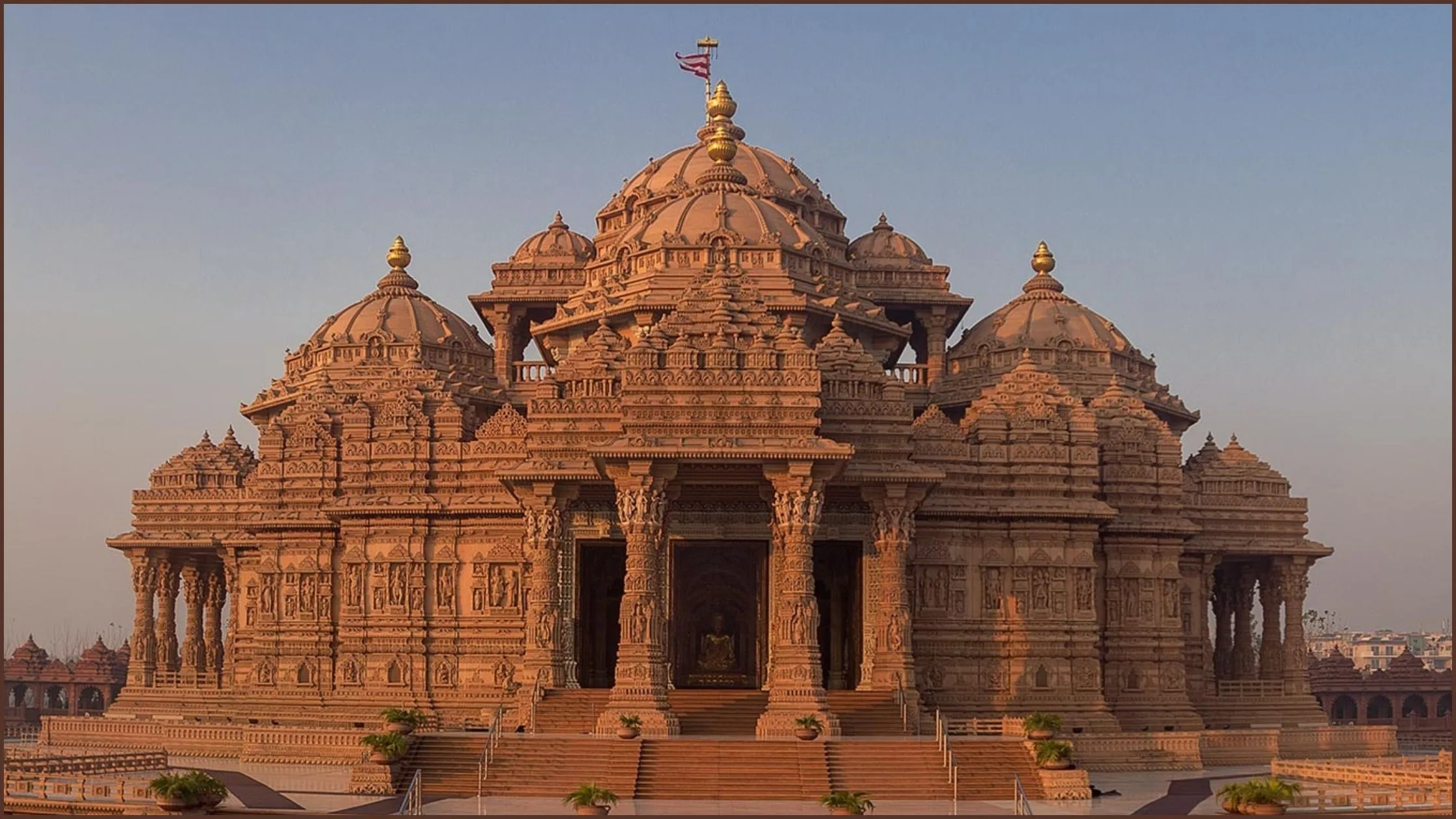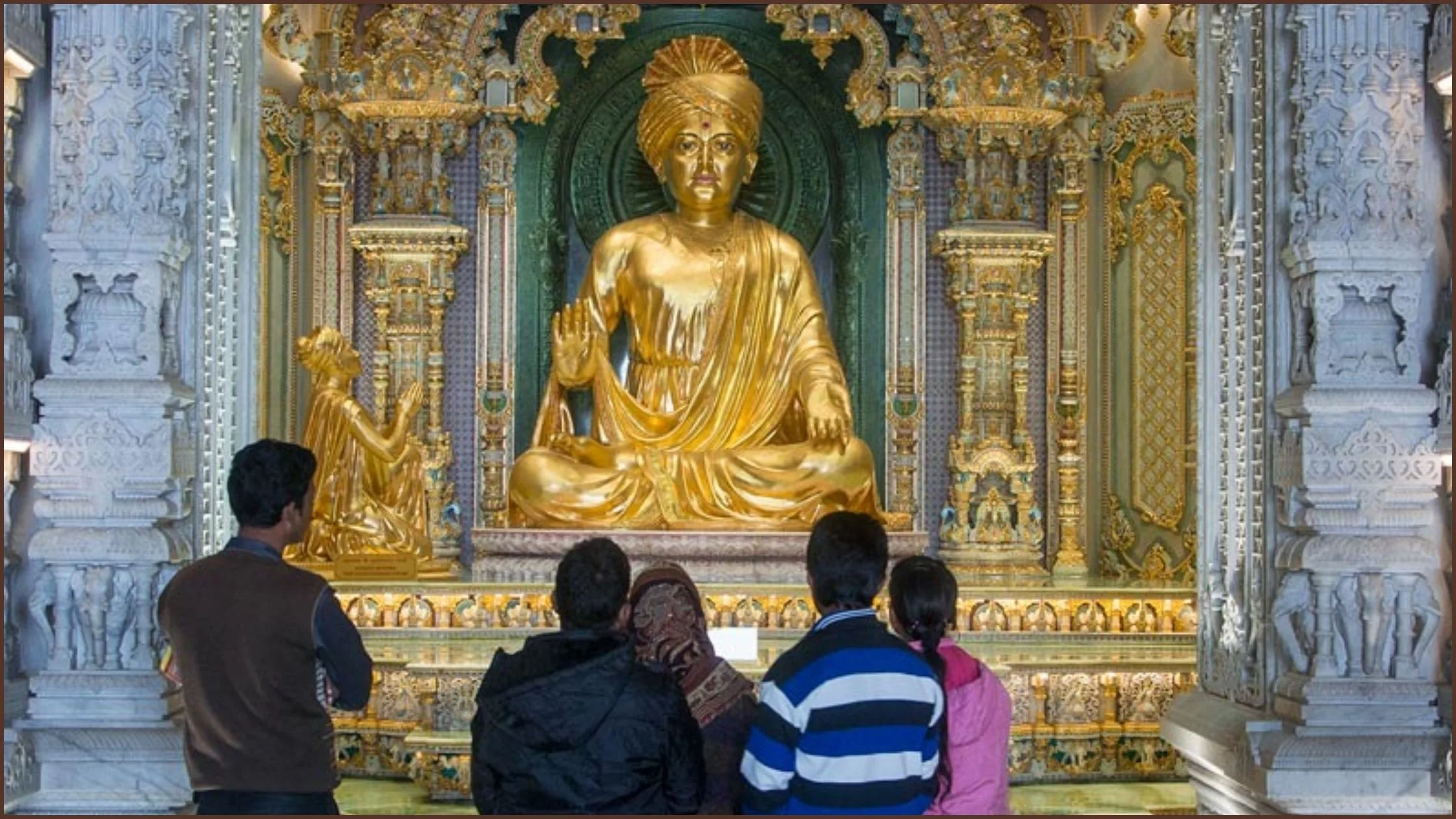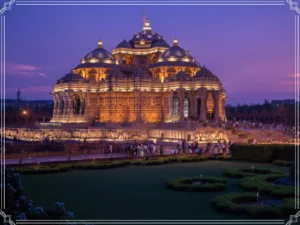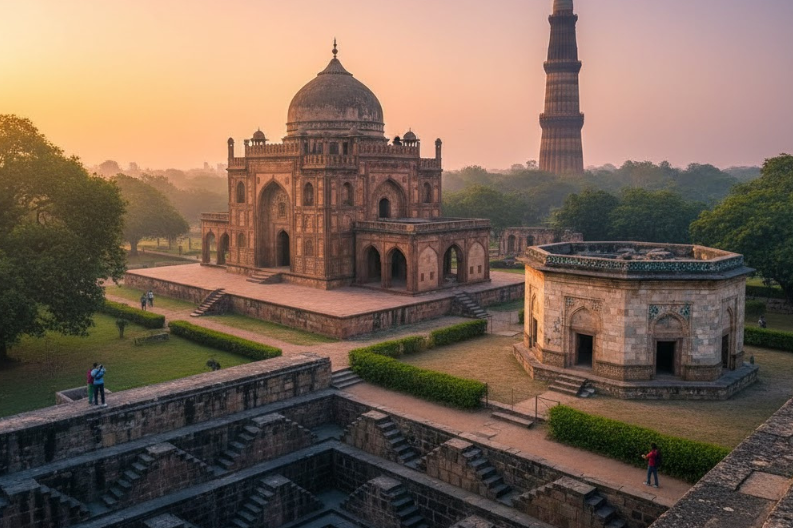India is the land of temples and religious architecture. You will witness impeccable temples and places of religious and historical importance all around the country. One such temple, which is located in Delhi, is the Akshardham Temple, which is the epitome of Indian architecture and spirituality.
Recently, the temple became more famous as it was registered in the Guinness Book of World Records as the Largest Comprehensive Hindu Temple in the world. The temple is inspired by the original Akshardham Temple, which is situated in Ahmedabad, Gujarat. However, it is a more magnificent and modernistic version of the old temple.
If you are planning to visit Delhi, adding Akshardham Temple to your itinerary is vital. Today, we will talk about everything you need to know regarding the Akshardham Temple.
About the Temple
Swaminarayan Akshardham Mandir opened its gates to the public on 6th November 2005. It is constructed and maintained under the Bochasanwasi Shri Akshar Purushottam Swaminarayan Sanstha (BAPS).
“Akshardham” refers to “The abode of God.” This temple is considered to be a place of devotion and peace for the followers of the Hindu religion. The temple is a tribute to Lord Swaminarayan, who is an avatar of Lord Vishnu.
The Temple is not just like any regular temple. Rather it is a spiritual and cultural campus with a lot of elements and things dear to Indians, especially Hindus. Every element situated in the temple is brimming with the echoes of spirituality. The mandir has over two hundred idols of Hindu gods and goddesses.

The temple is a blend of intricate traditional and contemporary architecture. Its stunning architecture is home to eight mandapams with Hindu scriptures and carvings on the walls. At the center of the temple lies the idol of Swaminarayan Bhagwan, with 20,000 other deities.
The Architecture and Grandeur
The Akshardham Temple stands 141 feet tall, 316 feet wide, and 356 feet long. The roof and walls of the temple and beautifully engraved with sculptures of musicians, dancers, and different deities. The temple premises is a cultural bliss, with nine domes occupying 20,000 murtis of important Hindu deities, acharyas, and sadhus.
The construction of the temple was carried out using the Maharishi Vastu Architecture. Also, the builders utilized the Shilpa Shastra to maximize the lifespan and endurance of the temple without using steel or concrete. The complete temple is made up of Pink sandstone from Rajasthan and has parts adorned with Italian Carrara marble.
The important architectural structures in the temple premises are as follows-
-
Garbhagreh
The central dome of the temple, also known as Garbagreh, is the place that houses the 11-foot-high statue of Lord Swaminarayan sitting in Abhayamudra. Besides him are sculptures of Gurus, who are devoted servants of the god. Behind the Garbhagreh are the items sanctified by god when he resided on Earth. Apart from that, the area has murtis of the most important Hindu gods- Shiv-Parvati, Lakshmi Narayan, Sita Ram, and Radha Krishan.

-
Mandovar
Mandovar is the Garbhagreh’s exterior wall. It is 25 feet high and 611 mt long, making this temple the largest temple built in the last 800 years. The Mandovar’s top has written scriptures, the center has sculptures of gods and sages, and the base has animal sculptures- especially elephants and lions.
-
Gajendra Peeth
Elephants are symbolic of Hindu culture, and the Gajendra Peeth that is created in the temple premises pays tribute to elephants. It contains 148 life-sized elephants with a total weight of 3000 tons. They are known to spread the message of peace, beauty, and gentleness.
-
Narayan Peeth
This portion includes the 60 feet long bronze relief panels, which have illustrations from Lord Swaminarayan’s life. The devotees come here to do Parikrama around God’s central figure.
Things to Do in The Temple
The temple premises is rather vast and has a lot of indulging things to do. Tourists and locals often come to this place to enjoy themselves with their family and friends. Some things to do in the temple include the following-
-
Take part in the exhibition
The exhibition at the Akshardham temple is one of a kind. In the exhibition, you can witness historical artifacts and informational items depicting things such as thousand years old surgery methods, ancient yoga, traditional chess, Vedic marketplace, and much more!
-
The Bharat Upvan
The garden surrounding the temple is magnificent, with statues of prominent Indian personalities such as freedom fighters and other national figures.

-
Sahajanand Darshan
Visit the Sahajanand or the Hall of Values, which is an arena to learn about values like morality, non-violence, family harmony, perseverance, etc. The values are taught to the visitors in indulging ways such as immersive projections, 3D dioramas, audio-animatronic figures, and many other techniques. It is a 1-hour show in Hindi and English.
-
Neelkanth Darshan
In another attraction, the temple has created a film depicting the journey of Bhagwan Swaminarayan throughout the great Indian subcontinent. The epic film is 45 minutes long and is screened at a theatre in the premises in Hindi.
-
Sanskruti Darshan
It is just like a cultural boat ride traversing the path with Vedic Indians such as Aryabhatta, Chanakya, Kalidasa, etc., along the way. It also shows about Takshashila– one of the world’s greatest university in pre-historic times and then move to the middle age and shows about Kabir, Meera, and other contributors to the Bhakti movement. The ride concludes with the contributors of C.V. Raman, Jagdish Chandra Bose, Satyendra Nath Bose, etc. The whole experience is 15 minutes long and is in Hindi.
-
Musical Fountain
Another thing that adds up to the facade of the brilliant Akshardham temple is the musical fountain and its Water Show also called the Sahaj Anand Show. The show runs for 24 minutes and starts at 7.30 pm every day. The ticket for the show is INR 80 for adults and 50 for children (4-11 years old.) You can see the show in the Kund, which is a large stepwell with 2870 steps and 108 shrines, with a 27 feet tall statue of Neelkanth Varni in the center.
-
Narayana Sarovar
It is a Sarovar built around the temple, which symbolizes the three spiritual rivers Ganga, Yamuna, and Saraswati. It is said that the water of the Sarovar is taken from 151 holy rivers and lakes throughout the country.

-
Food Court
Also known as the Premvati Ahagruh, the temple has a vegetarian food court with a theme of Ajanta Ellora caves.
-
Lotus Garden
The beautiful Lotus garden is a great place to relax and spend time with family, and it has stones engraved with sayings and thoughts of leaders and philosophers around the world.
Other Things to Know
If you are a local or a tourist and are planning a trip to Akshardham temple, there are a few things that you must know before making the visit. These include the following-
- Akshardham is located in Pandav Nagar in East Delhi. To reach there, you can go via the metro, state transport, or your own vehicle.
- The temple is open all day from 9.30 am to 6.30 pm, except on Sunday. The campus of the temple, however, is open till 9 pm in the evening.
- The temple premises ban the entry of mobile phones, cameras, and headphones. You can store them in the cloakroom, but the process is time-consuming. You will be fined and your device confiscated if you are found clicking pictures of the temple.
- You must dress up adequately to visit the temple. Try to cover your legs, shoulder, and navel.
- The fountain show is available only in the evening. You need to get tickets for that from the counter.
- Outside food is not allowed in the temple premises. You can take a water bottle with you, but it should be transparent.
- You can complete the tour of the temple in around 3-4 hours. So plan your trip accordingly.
- The temple has enough parking space on all days except for Sunday, when there might be a parking space crunch, considering the rush.
Final Words
When in around Delhi, visiting Akshardham temple is a must! The temple is an amazing tourist and worship place in Delhi, just like the Lotus Temple. It is a magnificent temple with cultural, historical, and architectural importance. Every day, thousands of people visit this temple to find peace and comfort in the arms of God. While it is an important religious place for the Hindus, it has also gained prominence amongst people of other faiths as its beauty and architecture leaves everyone awe-struck.



